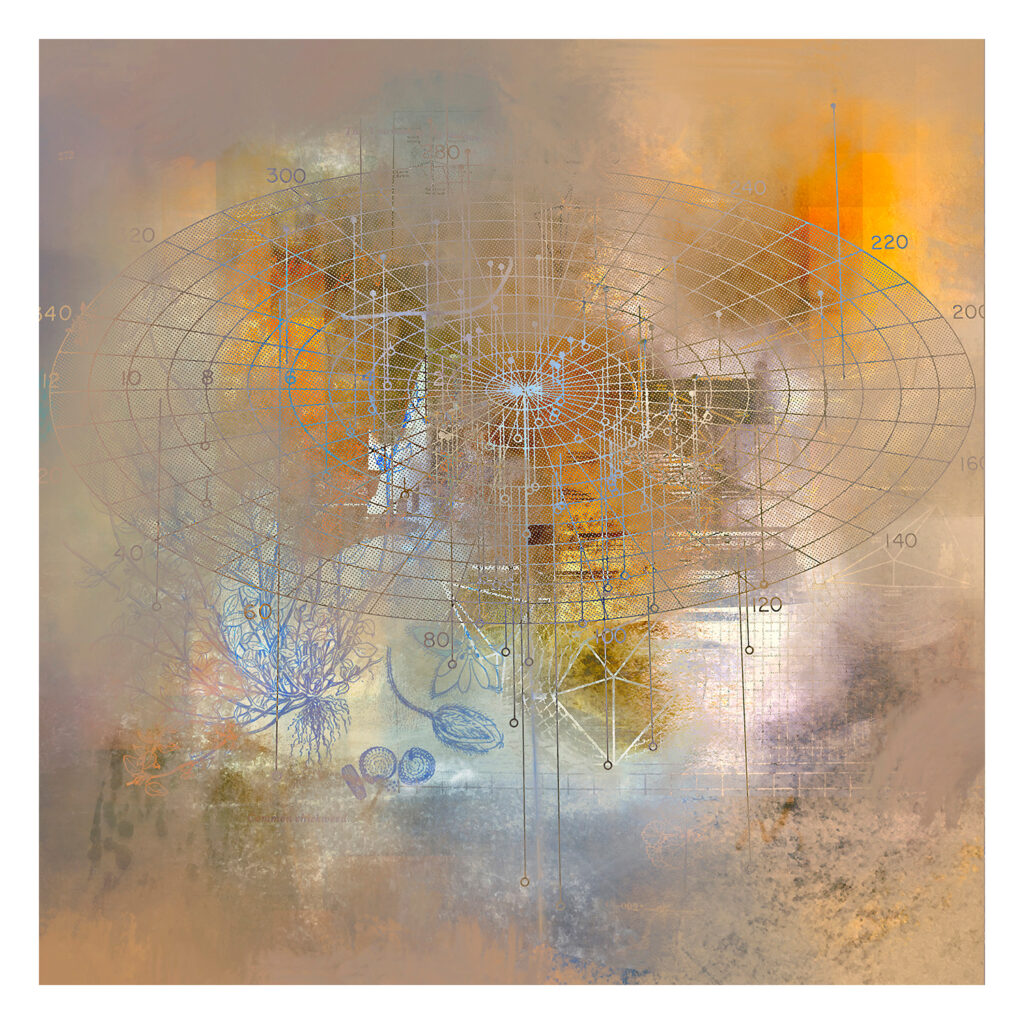Scott Groeniger

Scott Groeniger (Hawaii, USA)
Hyades Candidate: (HD 283869 b), 2020
image composite, digital printing, Procreate
12 x 12 inches
Maintaining social distance over a long period of time brings about a heightened sense of awareness regarding the nature of space. Our understanding of space and our position within it is at the core of human consciousness. Several elements found in Hyades Candidate: (HD 283869 b) are derived from the imaginative theoretical realm where mathematics and visual art meet. The geometric forms are semi-sacred and practical, suggesting global distribution patterns, lines of communication, and interconnected social communities. These geometries also describe phenomena such as the orbital motion of bodies in outer space and gravitational effects while mapping the position of recently discovered Earth-like planets with the potential for sustaining organic life elsewhere in the universe. In our current predicament here on Earth, where we continue to confront climate change, overpopulation, finite natural resources, and a global pandemic, these geometric structures offer a harmonic vision of a post-pandemic reformation in an enlightened and evolved [Off] World. The Hyades is the nearest open cluster and one of the best-studied star clusters in the universe. Located about 153 light-years (47 parsecs) away from the Sun, it consists of a roughly spherical group of hundreds of stars sharing the same age, place of origin, chemical characteristics, and motion through space. From the perspective of observers on Earth, the Hyades Cluster appears in the constellation Taurus, where its brightest stars form a “V” shape along with the still-brighter Aldebaran. Hyades Candidate (HD 283869 b) exhibits orbital parameters of a potential Super-Earth-like planet. It is estimated that HD 283869 has a 71% chance of falling within the circumstellar habitable zone. If confirmed, HD 283869 b would have the longest orbital period and brightest host star of any known transiting planet in an open cluster, making it uniquely important to future studies of how stellar irradiation affects planetary evolution.
